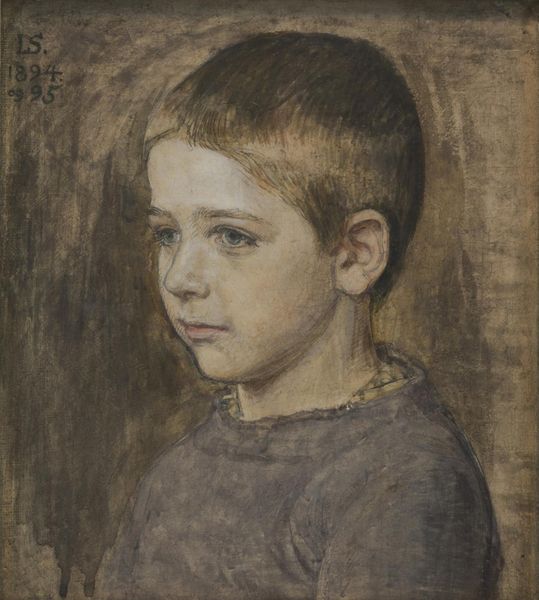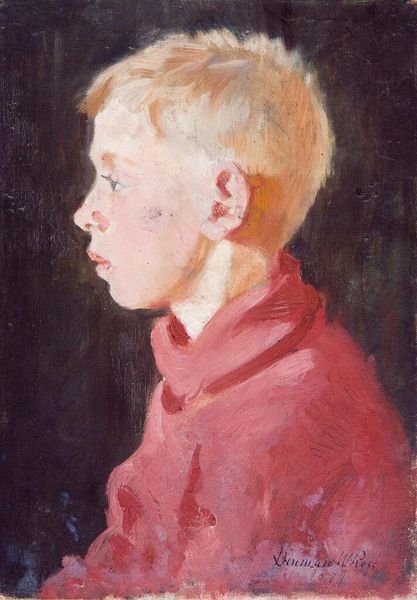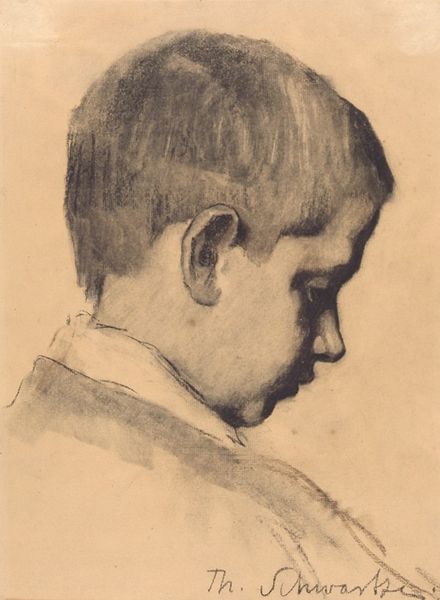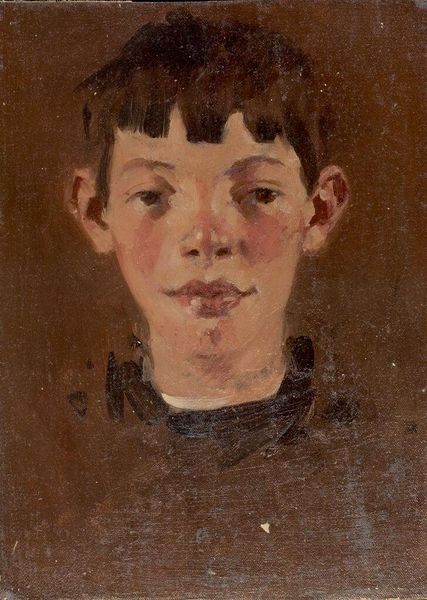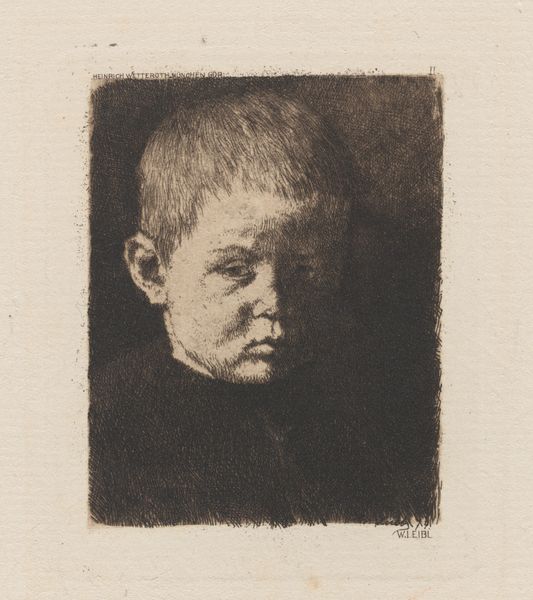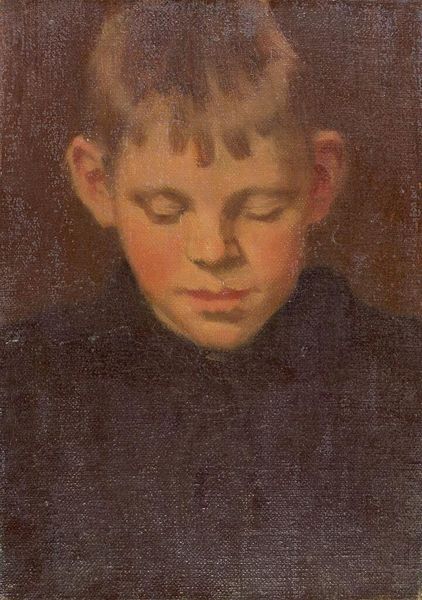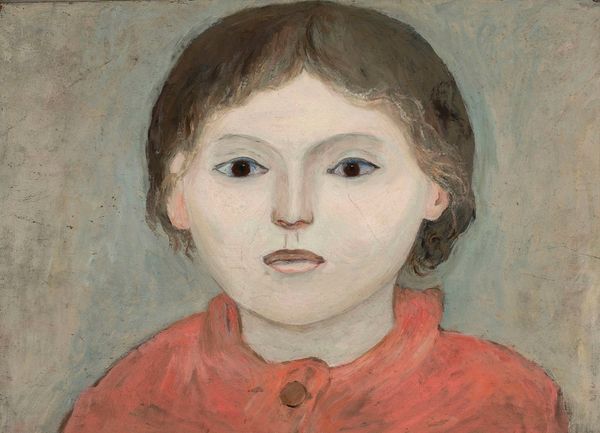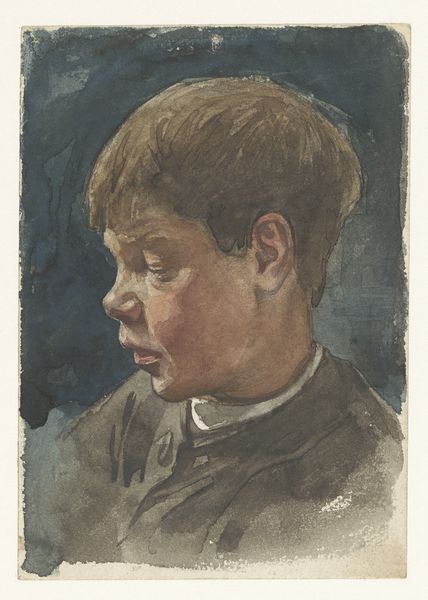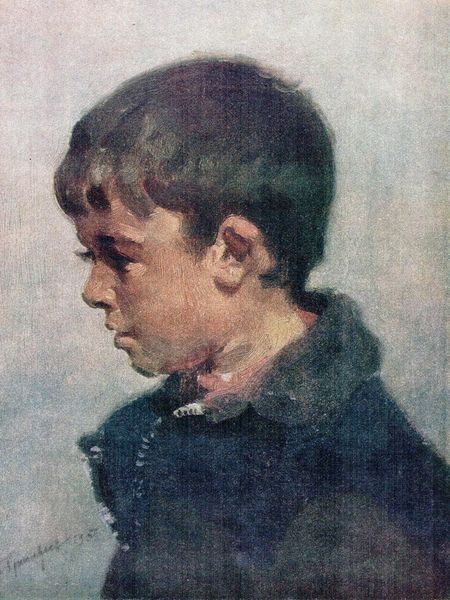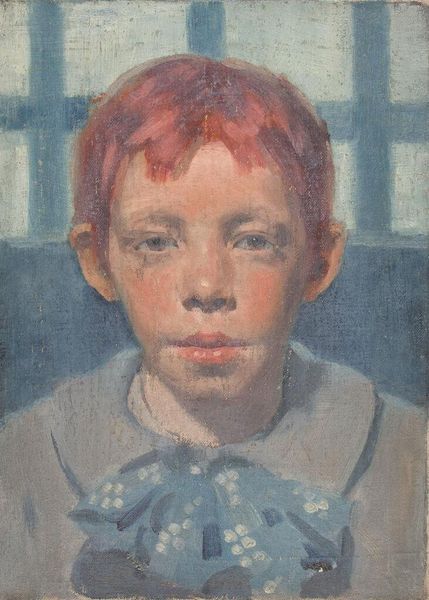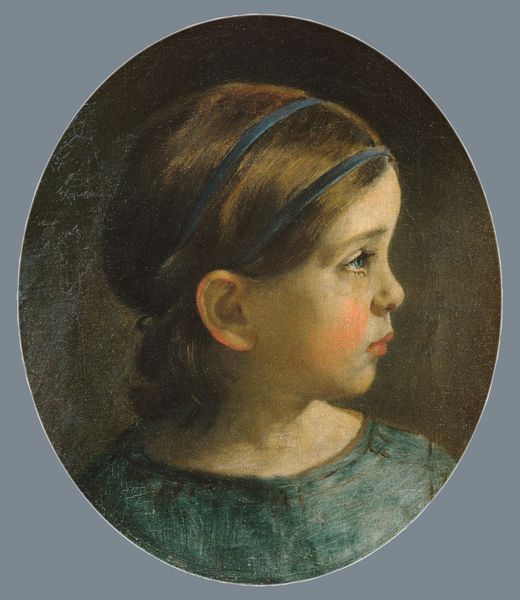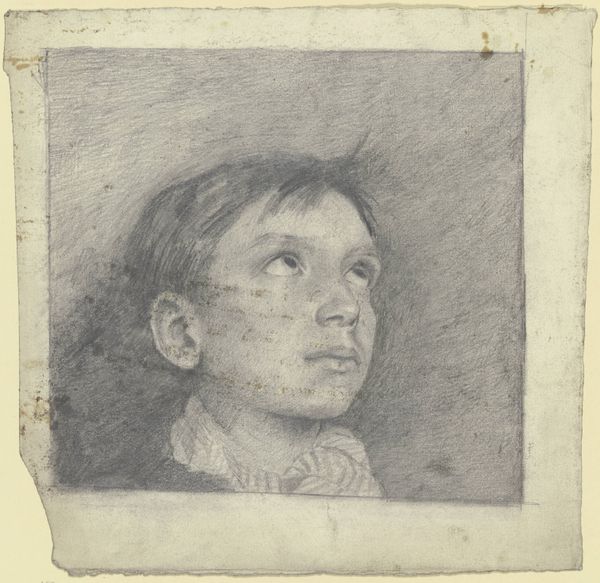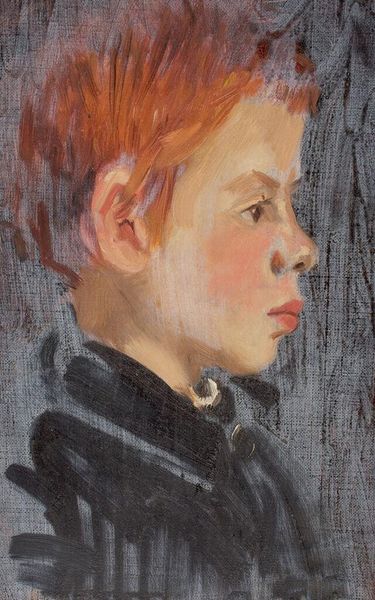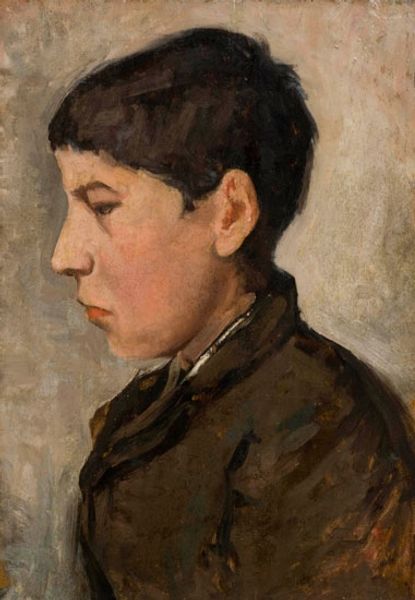
painting, oil-paint
#
portrait
#
painting
#
oil-paint
#
modernism
#
realism
Copyright: Public domain
Editor: This is Jan Mankes' "Portrait of a Boy," painted in 1915. The subject's gaze seems averted, lost in thought, the colors muted. What do you notice when you look at it? Curator: Immediately, I'm drawn to the physicality of the paint. Mankes builds up layers of oil, almost obscuring the canvas beneath, a testament to the time and labor invested in its creation. Notice how the brushstrokes create a tangible texture. Do you see a tension here, between the realism of the subject and the overt materiality of the medium? Editor: I hadn't thought of it that way. I was focusing more on the boy's expression. But now I see what you mean about the paint itself having a presence. Does that relate to the social context at all? Curator: Absolutely. Consider the scarcity of resources during World War I, when this was painted. Mankes’s meticulous handling of materials speaks to a careful rationing and valuation of those materials. It reflects the anxieties and restrictions imposed by war on even the simplest aspects of life. Even the choice of a humble subject, a common boy, might suggest a shift away from the glorification of elites often found in earlier portraiture. Editor: So, it's less about the individual and more about the materials and the process that shaped the painting? Curator: It's both. Mankes presents a portrait of a person and a portrait of a society grappling with wartime realities, reflected in his material choices and how he applied his media. Editor: That's a really interesting perspective. I appreciate understanding how to examine these types of choices the artist makes. Curator: Exactly, we gain so much more depth through that method. Considering those aspects creates a richer interpretation of any artwork.
Comments
No comments
Be the first to comment and join the conversation on the ultimate creative platform.
